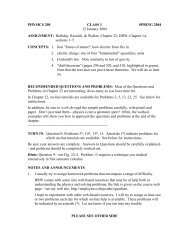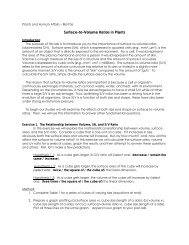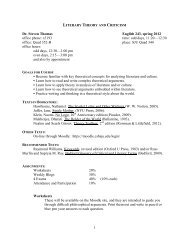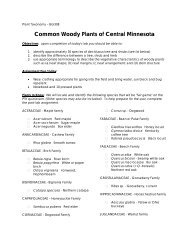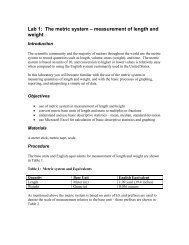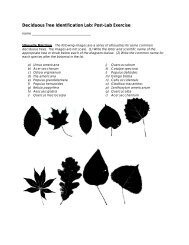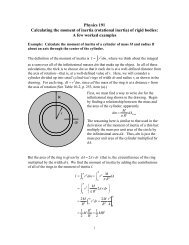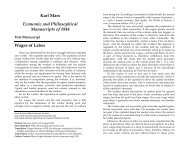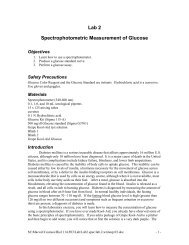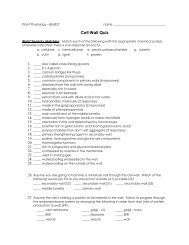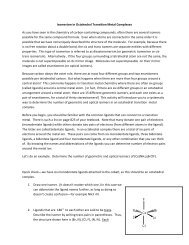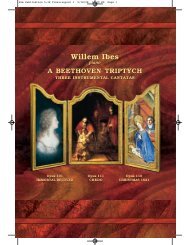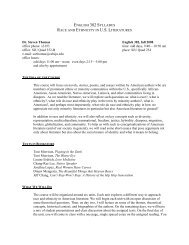Journal of Cross-Cultural Psychology - Employees Csbsju
Journal of Cross-Cultural Psychology - Employees Csbsju
Journal of Cross-Cultural Psychology - Employees Csbsju
You also want an ePaper? Increase the reach of your titles
YUMPU automatically turns print PDFs into web optimized ePapers that Google loves.
Lucas et al. / MARITAL SATISFACTION INVARIANCE 119between religion and marriage, as religion has been discouraged politically for most <strong>of</strong> thepast century. Marital satisfaction may vary in other less formal ways as well. For example,Campos, Keltner, Beck, Gonzaga, and John (2007) recently suggested that teasing, a socialinteraction that benefits relational bonds at the expense <strong>of</strong> the self, may be viewed morepositively by Eastern than Western cultures. Thus, playful teasing within the context <strong>of</strong>marriage may be viewed differently by couples from different cultures. Perhaps mostimportantly, our results suggest that romantic love and partnership, which compose twoseemingly universal qualities <strong>of</strong> a satisfying marriage, may also reflect cultural criteria.LIMITATIONSThere are several methodological limitations <strong>of</strong> our research. Foremost, our results arelimited by the nature <strong>of</strong> our samples. Samples from all four cultures were nonrepresentativeand predominantly urban, and thus, they do not reflect the entirety <strong>of</strong> each culture. Inaddition, although they were selected to provide diversity in geography, economic development,religion, and political system, our samples do not reflect the entirety <strong>of</strong> cultureacross the globe. It is entirely possible that the invariance <strong>of</strong> marital satisfaction would presentitself differently not only across a broader range <strong>of</strong> cultures but also if more representativesamples were available from within each culture. In addition, our results arecharacterized by uneven sample sizes. Although our use <strong>of</strong> relative fit indices minimizesany potential influence, this characteristic nevertheless confounds the fit indices that weobtained for each test <strong>of</strong> invariance.A second set <strong>of</strong> limitations concerns the use <strong>of</strong> marital satisfaction indices that weredeveloped in a Western culture. Undoubtedly, our assessments <strong>of</strong> marital satisfaction wereoperationalized using at least some culturally specific perceptions and benchmarks, and thiscould differentially affect the fit <strong>of</strong> these measures in non-Western cultures. In addition, maritalsatisfaction may be defined beyond considering only romantic love and partnership.Thus, researchers might consider replicating our results using alternative and additional measures<strong>of</strong> marital satisfaction. Such an undertaking should additionally consider better knownand more commonly used marital satisfaction measures. However, as noted previously, webelieve that the use <strong>of</strong> the MARQ in the present study was advantageous at least to the extentthat it defines marital satisfaction in a highly multidimensional manner, and this affordedboth evolutionary and cultural considerations <strong>of</strong> spousal satisfaction.A final set <strong>of</strong> limitations concerns our interpretation <strong>of</strong> invariance results. Specifically,we interpreted invariance characteristics as strictly supportive <strong>of</strong> either evolutionary or culturallydefined criteria <strong>of</strong> marital satisfaction. However, these perspectives are not mutuallyexclusive. The existence <strong>of</strong> cross-culturally diverse marital values certainly does notpreclude the influence <strong>of</strong> evolutionary forces in this domain, nor does the homogeneity <strong>of</strong>satisfaction preclude the importance <strong>of</strong> culture. In addition, tests <strong>of</strong> invariance do not <strong>of</strong>ferunequivocal support for either cultural or evolutionary interpretations <strong>of</strong> marriage. Forexample, although spousal invariance <strong>of</strong> romantic love does not rule out the possibility <strong>of</strong>an evolutionary interpretation, there are many other equally viable explanations that alsoremain. Similarly, noninvariance could merely indicate cultural differences in ways <strong>of</strong>answering survey items, such as unique use <strong>of</strong> scale midpoints (e.g., Cheung & Rensvold,2000). Invariance testing is also limited in that it requires an imposed-epic approach todefining marital satisfaction, which may promote the potential for cross-cultural standardizationat the expense <strong>of</strong> measurement misspecification.Downloaded from http://jcc.sagepub.com at College <strong>of</strong> St. Benedict/St. John's University on April 10, 2008© 2008 SAGE Publications. All rights reserved. Not for commercial use or unauthorized distribution.



